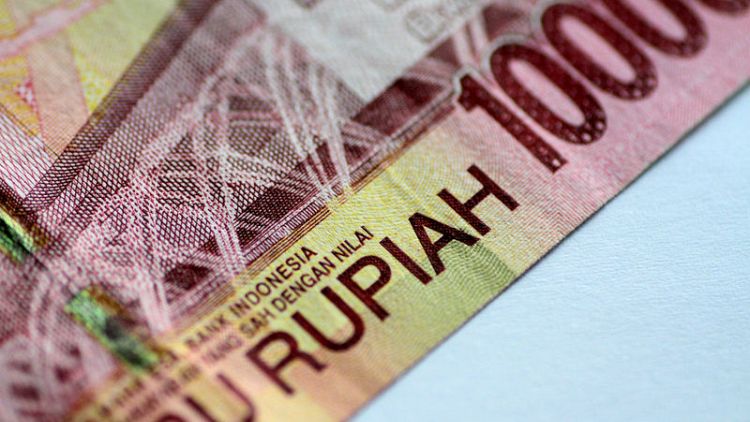SINGAPORE (Reuters) - Notwithstanding solid economic growth, low inflation and a proactive central bank, Indonesia finds itself in the same uncomfortable position it had during the 2013 emerging markets sell-off - Asia's worst-hit market.
Five years ago, it was one of the "fragile five", alongside India, Brazil, Turkey and South Africa, hit by "taper-tantrum" triggered by U.S. policy tightening. This time, Jakarta has been battered by contagion from collapsing markets in two of those, Turkey and South Africa, plus Argentina.
Indonesia's current fragility comes from a mix of longstanding and new factors. It has long had huge amounts of foreign money invested in its high-yielding bond market. Now it does not have trade surpluses, and the current-account deficit has worryingly widened.
While India, Malaysia and the Philippines share some of Indonesia's domestic problems around foreign ownership of markets, their currencies are less accessible to speculators. Indonesia has had a basically free foreign exchange regime since the late 1960s.
The rupiah <IDR=> has shed nearly 9 percent this year, while India's rupee <INR=IN> has had a double-digit fall, making them Asia's biggest losers against a broadly strong dollar.
For a graphic on Asian currencies YTD and yields, click https://reut.rs/2oILzDu
The Jakarta stock market <.JKSE> is Asia's worst performer in 2018 after China, with losses of more than 10 percent.
For a Asian stock market performance, click https://reut.rs/2oGXIJ0
Indonesia ran up a current account deficit of about $8 billion in the second quarter. In addition to fuel, the import bill was inflated by inflows of capital and consumer goods, which bore out the resilience of domestic demand and investment.
For a graphic on Asia's current account balances, click https://reut.rs/2wNrSP8
While the current account deficit is the rupiah's Achilles' heel and has grown since 2013, the current level is far smaller than those of other fragile emerging market peers. The country also has a history of volatile inflation and currency moves.
For a graphic on emerging market current account balances (% GDP), click https://reut.rs/2oLghvI
But the ability to fund that wide current account deficit is what is causing investors to worry. The government has imposed tariffs on consumer imports, tried to rein in capital goods imports and raised interest rates, all of which could have negative implications on now-shakier consumer demand and growth.
For a graphic on Indonesia foreign investment, click https://reut.rs/2PJPHOZ
Foreigners own about 37 percent of the Indonesian government bond market and have pulled out very little this year, comforted by the commitment of new Bank Indonesia Governor Perry Warjiyo to be proactive and the 125 basis points of quick policy tightening since May.
The equity market <.JKSE> has however seen outflows of $ 3.68 billion so far this year, compared with an exit of $2.96 billion in all of 2017.
For a graphic on real interest rates in Asia https://reut.rs/2NQOHrI
Indonesia has less foreign debt, close to about 20 percent of GDP, than some of the more vulnerable emerging markets.
For a related graphic, click https://reut.rs/2NRvwOp
Still, if all the foreign money in its bond market were to leave, that would equal the loss of half of FX reserves, totalling $118 billion, leaving Indonesia and the rupiah in a precarious position.
For a graphic on Asia FX reserves in months of imports, click https://reut.rs/2NUlLzf
(Writing by Vidya Ranganathan; Editing by Richard Borsuk)



